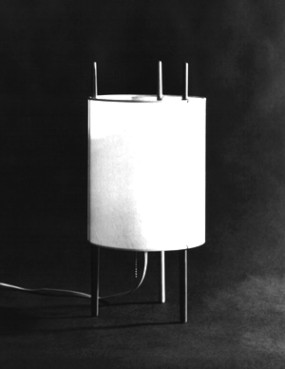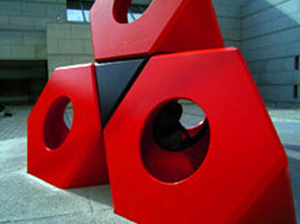3.21.25 — The Modern Art Factory
Last time I revisited the Isamu Noguchi Museum as it nears its fortieth anniversary by the Queens waterfront. The museum celebrates with a modest rehanging. Here let me excerpt a fuller review from one of my very first visits, for a better introduction to a place you should know.
 To begin then, At the very end of his career, Isamu Noguchi worked on a large, roughly human scale. Like living animals, too, the sculpture sprawls oddly without losing stability. It rests on the ground without stands or supports—except where the base transforms the art object itself. Moving around a room’s central partition made me think of wandering in a zoo as a child. Yet late work has become completely abstract. Dark materials suggest the monochromes of late-modern painting, in Noguchi’s contemporaries from Mark Rothko through abstraction today. Arbitrary changes in texturing echo and subdue a painter’s more extravagant gestures.
To begin then, At the very end of his career, Isamu Noguchi worked on a large, roughly human scale. Like living animals, too, the sculpture sprawls oddly without losing stability. It rests on the ground without stands or supports—except where the base transforms the art object itself. Moving around a room’s central partition made me think of wandering in a zoo as a child. Yet late work has become completely abstract. Dark materials suggest the monochromes of late-modern painting, in Noguchi’s contemporaries from Mark Rothko through abstraction today. Arbitrary changes in texturing echo and subdue a painter’s more extravagant gestures.
The layout upstairs becomes only slightly more prosaic, like a maze of numbered boxes. It could represent a deliberate shift backward, to the architecture of an earlier Modernism. Noguchi’s career shifts with it. Its twin poles of art and urban reality do not. Elsewhere upstairs, the artist struggles in his role as public servant, with commissions that never got built. Yet a room devoted to the Japan project makes a fitting memorial quite by itself—only now, to an artist holding true to himself.
One gets a brief tour of the sculptor’s early career in Paris, under Constantin Brancusi. He learns effortlessly Brancusi’s imagery and materials. One meets again those bronze skulls and slim, towering birds. Noguchi also has his fling with Surrealism, in tight arrangements of small objects. He then grows more abstract, but also more at home in the conscious, the familiar, and the prosaic. He is finding his way to a personal style, away from Modernism’s dark interiority.
Elsewhere upstairs, the California-bred artist struggles in his role as public servant. He returns to Japan, where he also grew up, to commemorate victims of the atomic bomb. Later on, he worked alone and with Louis Kahn, the architect, on playgrounds along the Hudson River that would have made Sanford Robinson Gifford proud. Not one plan got built, in Japan or New York, but the artist never lost his utter self-confidence. For Manhattan, Noguchi submitted his projects again and again and again. A room devoted to the Japan project makes a fitting memorial quite by itself—only now, to an artist holding true to himself.
I thought of a play just on the edge of limits, too, as I walked again in the garden downstairs. I started by following the garden path, in its careful course past each work. Yet I could not resist breaking off to the small, loose stones for a closer look. I could not help running my hand through a slim sheet of water that trickles off the fountain. If art here tumbles on the edge of nature, so did I.
The factory versus the museum, the special exhibition versus the career history, the market versus the product—each tells a similar story. Noguchi speaks to a modern artist’s difficult identity as source for a richer art. As an American high modernist, with roots in three countries not long ago at war, he may well define the puzzle. As I walked again in the garden downstairs, I could not resist breaking off to the small, loose stones for a closer look. I could not help running my hand through a slim sheet of water that trickles off the fountain. If art here tumbles on the edge of nature, so did I.
Read more, now in a feature-length article on this site.
